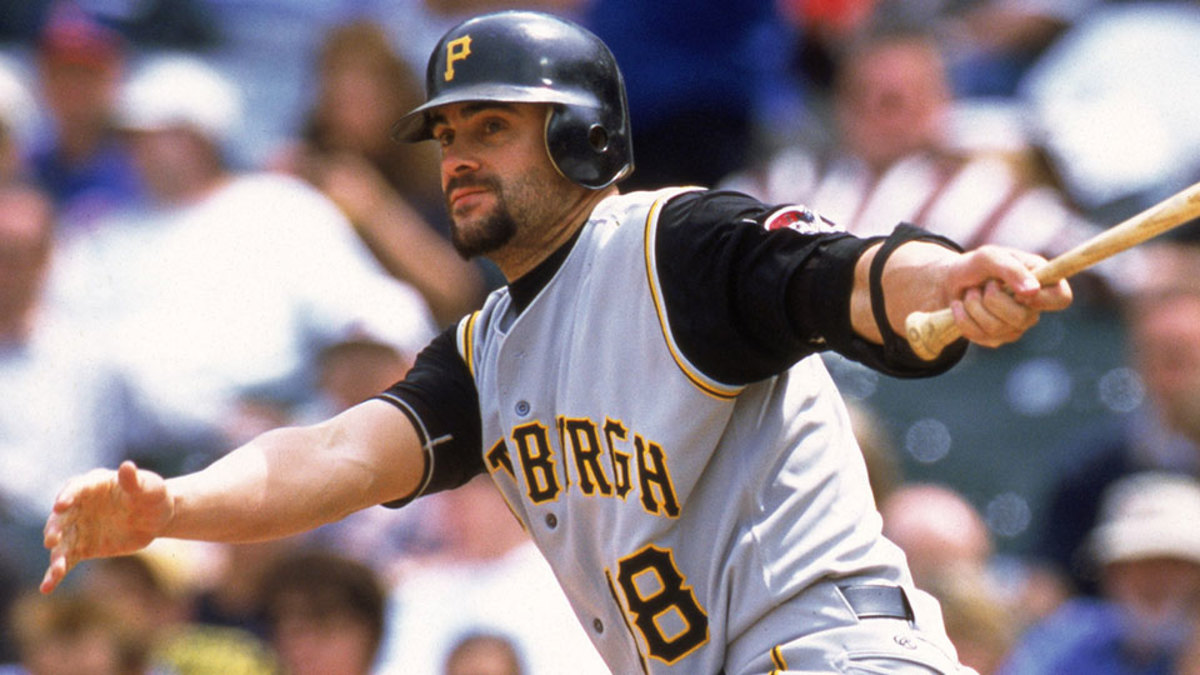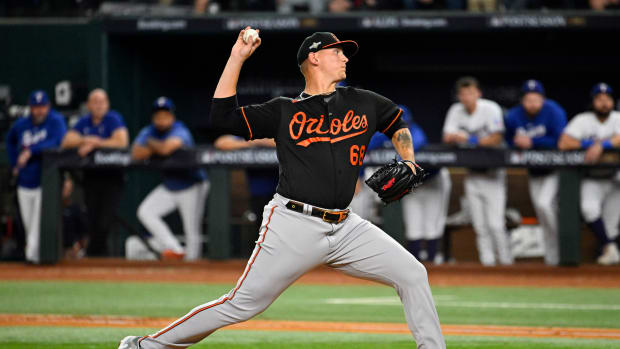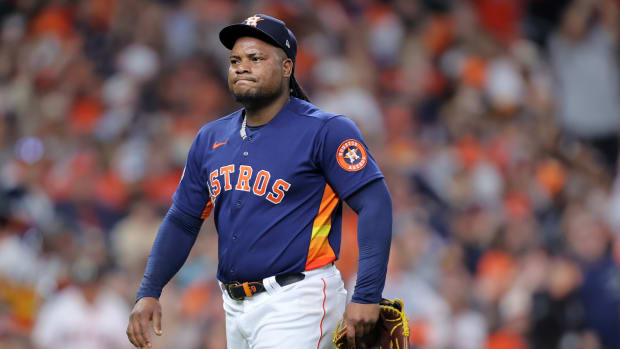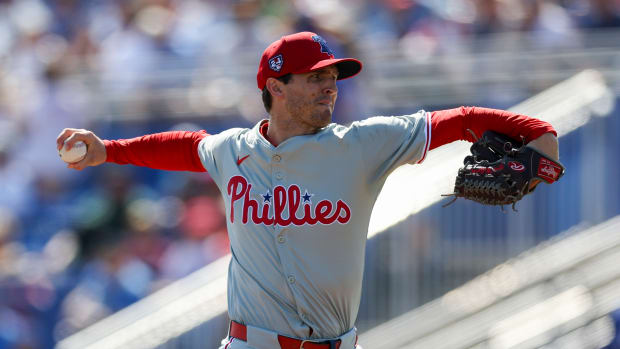JAWS and the 2016 Hall of Fame ballot: Jason Kendall
With a strong claim as the greatest-hitting catcher of all time, Mike Piazza has a very good chance of being elected to the Hall of Fame in 2016, but he's not the only catcher on this year's ballot who could hold his own at the plate (sorry, Brad Ausmus, I'm not talking about you). Indeed, Jason Kendall made strong showings in a few batting title races early in his career and showed enough all-around skill on the bases and behind the plate to rate not only among the game's most valuable backstops, but also among its brightest young stars at any position.
JAWS and the 2016 Hall of Fame ballot: Schedule for write-ups
Alas, Kendall spent the first nine seasons of his 15-year career with the Pirates at a time when the franchise was completely adrift amid a streak of 20 consecutive losing seasons. In his youth, he offered more than a glimmer of hope that the team could build around him, but while he bounced back admirably from a grisly ankle injury that cost him half of the 1999 season, he wore down under the weight of heavy workloads. Kendall's six-year, $60 million contract once gave Pirates fans hope that they could retain one of their top homegrown talents, but the deal quickly became a burden for a rudderless, low-revenue franchise. He spent the back half of his career bouncing from team to team as his offensive skills eroded, though at least he got to taste the postseason—three times with three different teams in three consecutive years, in fact.
Unlike Piazza, Kendall isn't going to wind up in Cooperstown, and in fact, his candidacy isn't even likely to extend past this year because he won't receive the 5.0% minimum necessary to stay on the ballot. Still, while I could have easily dispatched him alongside Ausmus and friends in one of my "One-and-Done" batches of candidates, he stands head and shoulders above that group. Thus, he has the honor of being the final candidate on this year's ballot to come under my microscope.
player | career | peak | jaws | h | hr | sb | avg | ops+ |
Jason Kendall | 41.5 | 30.3 | 35.9 | 2,195 | 75 | 189 | .288/.366/.378 | 95 |
Avg. HOF C | 52.5 | 33.8 | 43.1 |
|
|
|
|
|
Kendall was born in 1974 in San Diego, just after the peak of his father Fred's 12-year major league career (1969 to 80) as a catcher with the Padres, Indians and Red Sox. As a youngster, Jason met future Hall of Famers such as Rollie Fingers, Gaylord Perry, Ozzie Smith and Dave Winfield, absorbing lessons on how to act like a big-league player alongside older brother Mike, his future high school batterymate (and now a Giants scout).
JAWS and the 2016 Hall of Fame ballot: Fred McGriff
Like their father, the Kendall boys went to Torrance High School, where Jason starred as a quarterback when he wasn't playing baseball. It was on the diamond where he attracted more attention, however, thanks in part to his tying a United States prep record with a 43-game hitting streak. In the spring of 1992, Baseball America rated him as the 15th-best high school player in the country, and USA Today named him to its 25-man preseason team. "[H]e loves baseball so much that he told me he wanted to play catcher just so he could handle the ball even more," Torrance coach Jeff Phillips said of Kendall as the accolades rolled in.
Kendall's bat, strong arm and receiving skills attracted considerable attention from scouts. The Pirates, who were amid a three-year run as National League East champions and who employed catching great Ted Simmons as their general manager at the time, chose him with the 23rd pick of the 1992 draft and gave him a $336,000 signing bonus, the largest in club history at the time. Kendall began his career in the Gulf Coast League and moved up to the South Atlantic League the following season, where he crossed paths with his father. Via the Pittsburgh Post-Gazette's Chuck Finder:
A year later, father and son first collided in a professional ball game, and Fred tried to get Jason tossed. Fred Kendall was managing Chicago White Sox affiliate Hickory, N.C., in the South Atlantic League. Marc Pisciotta of the Pirates' Augusta club had thrown at a Hickory player's head, and Augusta catcher Jason Kendall tackled the offended batter, touching off a brawl. Pisciotta and four Hickory players were ejected.
Kendall the Hickory manager yelled at the umpire about Kendall the Augusta player, "Aren't you going to kick the catcher out of the game?" Overhearing, Jason asked, "Geez, Dad, are you going to pay my fine, too?"
After strong seasons in the high A Carolina League (.318/.406/.437 in 1994) and Double A Southern League (.326/.414/.448 in '95), Kendall placed 26th on Baseball America's Top 100 Prospects list in the spring of '96. He made the team out of spring training, and on Opening Day, he went 3 for 4 with a double and two RBIs against the Marlins; the first two hits came off Kevin Brown. Not everything came quite that easily for the 22-year-old rookie, but he still finished the year batting .300/.372/.401 with just 30 strikeouts in 471 plate appearances. He was the 73–89 club's lone representative at the All-Star Game and finished third in the NL Rookie of the Year voting behind Todd Hollandsworth and Edgar Renteria. The only downside to Kendall's season was an MLB-high 18 errors, 16 of them throwing mistakes; Total Zone rated his defensive work at 12 runs below average, depressing his WAR to 1.6.
JAWS and the 2016 Hall of Fame ballot: Billy Wagner
Both Kendall's offense and defense took significant steps forward in 1997. At the plate, he hit .294/.391/.434 for a 114 OPS+, augmented by eight homers, 18 steals in 24 attempts and 31 hit-by-pitches (ouch). Behind it, he cut his error total to 11, threw out 37% of would-be base thieves and finished four runs above average en route to 4.1 WAR; among catchers, only Piazza (8.7), Ivan Rodriguez (6.5) and fellow 1992 first-round pick Charles Johnson (4.4) ranked ahead of him. The upstart Pirates, in their first year under new manager Gene Lamont, finished second in the NL Central at 79–83; it was the closest they would come to .500 in the dark, dreadful span from '93 to 2012.
Pittsburgh slid to 69–93 in 1998, but Kendall's game continued to improve, as he hit .327/.411/.473 with 12 homers and a 131 OPS+. His batting average ranked fifth in the league, his 26 steals set an NL record for backstops (and still rank as the third-highest total by a catcher since 1901), and again he was hit by 31 pitches (an MLB high, this time), a product of his tendency to crowd the plate. "It's not like I go home and practice it in the off-season," he told Keith Olbermann for a June 15, 1998 feature in Sports Illustrated. "I don't stand in the batting cage and point to my shoulder and say, 'Try over here.'"
JAWS and the 2016 Hall of Fame ballot: Trevor Hoffman
Again, Kendall was the lone Buc at the All-Star Game, and again, he finished among the majors' top catchers in WAR; this time, his 5.6 ranked behind only Pudge (6.4) and Piazza (6.3). He was off to an even better start in 1999 (.332/.428/.511 with eight homers, 22 steals and 4.1 WAR in just 78 games) when disaster struck. On July 4, while attempting to beat out a bunt against the Brewers' Steve Woodward (who was nearly halfway to a no-hitter), Kendall's right foot caught first base awkwardly. The result was gruesome: Kendall fractured and dislocated his ankle, tearing all four ligaments in the joint; his fractured fibula punctured the skin. "His foot was pointing one way and the bone was the other way," said Brewers first baseman Mark Loretta. "It went through his sock and everything." Kendall underwent season-ending surgery, and the injury gained notoriety as baseball's equivalent of the Joe Theismann break.
Fortunately, Kendall rebounded. Back in the lineup on Opening Day in 2000, he hit .320/.412/.470 with a career-high 14 homers, 22 steals (but 12 caught stealing) and 4.5 WAR (fifth among catchers but just 1.0 WAR behind leader Jorge Posada) and made his third All-Star team in five seasons. Even with the lost half-season, his 19.9 WAR from 1996 to 2000 ranked third among major league catchers behind Rodriguez (30.2) and Piazza (29.6). That total ranks 11th among all catchers in baseball history through their age-26 seasons, ahead of all but three of the 13 catchers in the Hall of Fame, not to mention a few more—such as Rodriguez, Joe Mauer and Simmons—who should be there some day. All of which is to say that at that juncture, a spot in Cooperstown was not out of the question for young Mr. Kendall.
In November, shortly after the Pirates’ latest 69-win season ended, the team signed Kendall to a six-year, $60 million extension covering the 2002–07 seasons. Founded in the optimism of moving into beautiful PNC Park for 2001, the deal was the largest in team history and made him the game's second-highest paid catcher behind Piazza. "If I didn't believe we weren't going to win here, I wouldn't stay here, no matter how much money they gave me," he said. "It's going to happen here. I've just got that feeling."
JAWS and the 2016 Hall of Fame ballot: Lee Smith
Alas, that optimism was overstated, in part due to Pittsburgh's poor drafts and financial limitations, and in part because Kendall was such an asset that his managers (Jim Leyland, Gene Lamont and Lloyd McClendon, all former catchers) were in the process of wearing him down to the nub. Kendall led all NL catchers in games caught in 1997, '98 and 2000, with at least 142 in each season. His 2000 season had ended on a painful note, as an errant pickoff throw struck his right cheek on Sept. 14 and fractured a bone, but he played through to the end of the season before undergoing surgery. Likewise, he suffered a torn ulnar collateral ligament in his left thumb during the 2001 season's first series but refused to go on the disabled list, playing in the outfield corners on days he wasn't catching. In all Kendall played 157 games, but his performance collapsed: He hit .266/.335/.358 with 10 homers for a 78 OPS+, was caught in 14 of his 27 stolen base attempts, threw out just 28% of would-be base thieves (in a league where 33% was average) and finished with 0.1 WAR. That performance came amid a dismal backdrop, as the Bucs lost 100 games for the first time since 1985.
After undergoing reconstructive surgery on the thumb during the off-season, Kendall was a bit better (86 OPS+, 2.4 WAR) in 2002, his first year under the new contract, but with the team cutting payroll from $57 million in '01 to '$42 million in '02, it was apparent that his contract would soon become a problem. His bat did perk up again, as he hit a combined .322/.399/.403 for a 109 OPS+ with 8.2 WAR over the next two seasons, placing sixth and eighth in the NL in batting average with marks of .325 and .319, respectively. His power and speed had both obviously dissipated; he hit nine homers over that span and was just 19 for 34 in stolen base attempts. With their annual win totals mired in the low 70s, the cash-strapped Pirates had begun shedding top players as they grew more expensive, dealing Jason Schmidt to the Giants in 2001 and both Brian Giles to the Padres and Aramis Ramirez to the Cubs in mid-2003.
JAWS and the 2016 Hall of Fame ballot: Gary Sheffield
On Nov. 27, 2004, the 30-year-old Kendall was sent out the door as well, dealt to the Athletics for pitchers Mark Redman and Arthur Rhodes plus $5.5 million of the $34 million he was still owed. It didn't look like a good deal for Pittsburgh in terms of the talent and salaries it received in return, but the reality is that the Pirates got out from under a contract that didn't make much sense for them, and did so just as Kendall was about to start his decline. Though he helped the A's to the AL West title in 2006 and delivered enough defensive value to be worth 6.1 WAR in '05–06, he hit a thin .283/.355/.331 with one homer and an 84 OPS+ for those two seasons and failed to homer in any of his 676 plate appearances in 2005, the most PA without a homer since 1989 (Harold Reynolds, 677). His workloads were as heavy as ever: He led his league in games caught every year from 2002 to '05 before falling to second in '06.
When Kendall's bat slipped even further in 2007, Oakland dealt him to the Cubs in mid-July. He took over the regular catching duties for a team that won the NL Central but finished the year with a career-low 62 OPS+ and just 1.2 WAR. A free agent that winter, he signed a one-year, $4.25 million-plus-incentives deal with the Brewers, and while his bat remained limp (74 OPS+), he caught a league-high 149 games, threw out a league-high 43% of attempted stolen base thieves and delivered 2.8 WAR for a team that claimed its first postseason appearance in 26 years—Kendall's third year in a row playing October baseball.
It turned out to be his last good season. While his workload triggered a $5 million vesting option, Kendall gave Milwaukee a replacement-level performance, then did the same in the first year of a two-year, $6 million deal with the Royals in 2009. He missed the final month of the '10 season due to surgery to repair tears in his rotator cuff, then needed a second shoulder surgery in July 2011, costing him the entire year. He lasted just two games at Double A in a mid-2012 comeback attempt, as his shoulder wasn't up to the task. At 38, he retired.
JAWS and the 2016 Hall of Fame ballot: Jeff Kent
Kendall finished his career with 2,195 hits, a total that ranks fourth among players whose primary position was catcher, behind only Rodriguez (2,844), Simmons (2,472) and Carlton Fisk (2,356); including only games at catcher—a category in which he ranks fifth all-time at 2,025—Kendall's total of 2,160 hits ranks second only to Rodriguez's 2,749. Between those hits, a good bating eye and a willingness to take one for the team (he's fifth all-time in hit-by-pitches at 254), his .367 on-base percentage ranks 12th among primary catchers with at least 5,000 plate appearances. Meanwhile, his 183 stolen bases while playing catcher (the strict split) are the most by any backstop since 1914.
Because of his lack of power, those offensive numbers don't add up to Hall of Fame caliber for a catcher, but when combined with above-average defense (+16 runs for his career via a combination of Total Zone and Defensive Runs Saved), his overall standing is eye-opening. Kendall's 41.5 career WAR ranks 19th at the position, and his 30.3 peak WAR and 35.9 JAWS both rank 18th. He's only ahead of a small handful of Hall of Fame backstops via any of those rankings, including four via JAWS, namely Roger Bresnahan (34.9), Roy Campanella (33.5, in a major league career truncated by the color line and injury), Ray Schalk (25.3) and Rick Ferrell (24.9). He's also the highest-ranked catcher among those with an OPS+ below 100.
Kendall does surpass a trio of durable, well-regarded catchers from the 1970s in Darrell Porter (34.9 JAWS, 22nd), Jim Sundberg (34.5, 23rd) and Lance Parrish (33.8, 25th). Each of those players had the good fortune to be surrounded by enough talent at some point in their careers to play on at least one championship team, but each was also far less productive in his 30s than his 20s due to injuries and heavy workloads. Kendall's prime was squandered in Pittsburgh, and while it's clear that the Pirates got by far the best of his career (30.6 of his 41.5 WAR) in the end, he's yet another catcher whose early mileage caught up to him, dimming his star. His talents deserved better.



































